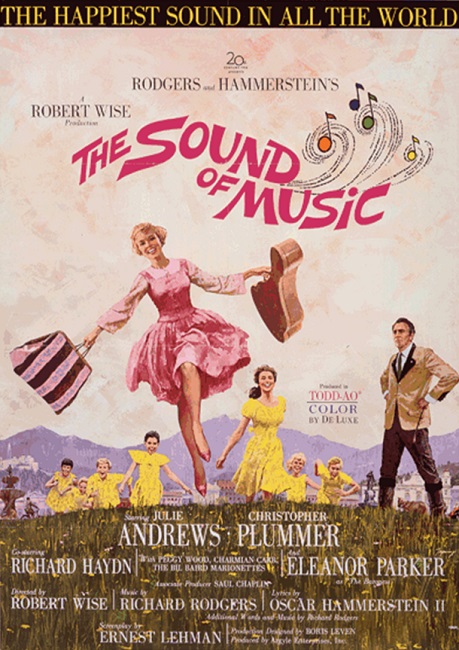
The Sound of Music – 1965
As musicals go, this was a great one. Anybody who likes the genre holds a special place for it in their heart. Julie Andrews was fantastic as the leading heroine, Maria. Christopher Plummer was wonderful as Captain von Trapp. The seven interchangeable children were fun to watch with a special nod to Charmain Carr as Liesl. Even Baroness von Schraeder turned in an especially good performance. I also have to give two thumbs up to Peggy Wood as Mother Abbess and Daniel Truhitte as Rolfe. All this is to say, right off the bat, that the movie was incredibly well cast.
And, of course, the musical score itself was a major component of the production. I would venture to say that it is one of Rodgers and Hammerstein’s most beloved musicals, and that is saying a lot. It is a feel-good show. The good guys win, the bad guys are thwarted, and love conquers all. What’s not to love?
Most of the movie was filmed on location in Salzburg, giving the film a very authentic look and feel. Right from the very beginning, as Maria is wandering in the hills that were apparently alive with sound of music, we see her has a young woman who is bubbling over with joy existing for its own sake. She is youthful and beautiful, and she has a lust for life that unfortunately makes her a problem for the quiet and sedate abbey where she resides. Her fellow nuns are forced to ask “How do you solve a problem like Maria?”
The answer? Get her married off to a handsome Captain with seven kids. Problem solved.
Fortunately, the kids display talents for singing, dancing, and puppetry that impress everyone. But then those pesky Nazis show up and ruin the party. In the end, the family must escape over the Alps on foot. Simple plot, right? But that is its beauty. It is predictable, but not boring. You still get worried for them when they are fleeing the Nazis, even though you know they will escape. You are still creeped-out when the handsome young German courier shows himself to be a true member of the Third Reich by nearly murdering Captain von Trapp, even thou you know he won‘t.
When it comes down to it, it is just a fun show, because before the Nazis become the prominent plot element, we have some of the most fabulous and memorable Broadway show-tunes ever written, the biggest being Do-Re-Mi. The song has a remarkably simple and repetitive melody. In musical terms, it uses a device called melodic sequencing which is a single phrase, repeated in different keys. It is what makes the song so easy to remember and pleasant to hear. Other songs like My Favorite Things, Edelweiss, So Long, Farewell, Climb Every Mountain, and The Lonely Goatherd, are also wonderful and fun to sing along with.
Interesting note: The Hollywood Bowl in Hollywood, California has had a sold out Sound of Music sing-along every year since 2005. They show the movie with the song lyrics clearly displayed on the bottom of the screen so the audience can participate. It has been called by some, “The Rocky Horror Picture Show on Prozac.”
The show was nominated for ten Academy Awards, winning five of them, one of which was a Best Director Oscar for Robert Weiss. Julie Andrews and Peggy Wood were both nominated for Best Actress and Best Supporting Actress, respectively, though neither of them won. However, not everybody loved the movie when it was first released. One critic, Pauline Kael, was quoted, calling it, “the sugar-coated lie people seem to want to eat.” Further more, she even went so far as to say, “We have been turned into emotional and aesthetic imbeciles when we hear ourselves humming the sickly goody-goody songs.” But it seems to me that she missed the point. The fact that we hear ourselves humming the tunes at all is a testament to the high quality of the music. (Apparently these negative comments got Pauline Kael dismissed from her job at McCall’s magazine.)
But I have to admit, her comments were not completely without merit. There were actually quite a few historical inaccuracies in the musical. The stage show was based on the memoirs of Maria von Trapp, one of the children who‘s name was changed to Louisa in the film; however, the inaccuracies cannot be blamed on the von Trapps. The family had given up the rights to their story to a German producer in the 1950s, who then sold them to American producers. The von Trapps had little, if any, input into the subsequent musical and film.
So, here is a little history lesson. First of all, I must say that these few things I am mentioning were all found on Wikipedia, where I find most of my dirty little secrets and Interesting Notes. Second, these are just the highlights of what my research uncovered.
Apparently, the real von Trapp family lived in a modest home, not the grand mansion portrayed in the film. Georg von Trapp was actually a very poor man, having lost the fortune he inherited from his first wife in an unwise business decision. When Maria married Georg, it was for simple practicality and convenience, not love. He needed a mother for his children, and she needed the security of a husband and family. Eventually, they grew to love each other. They were married in 1927, over a decade before the Nazi Anschluss (the German occupation of Austria) even took place. Georg was actually a doting and loving father, contrary to his character in the film. It was the step-mother, Maria, who was moody and prone to outbursts of manic rage. Georg was never in serious danger of arrested by the Nazis.
And finally, the family never escaped Austria by hiking over the Alps into Switzerland. This would have been impossible since Salzburg is only a few kilometers away from the Austrian/German border and is much too far from the Swiss or Italian borders for the family to reach by walking. In fact, a hike over the mountain from Salzburg would put them in the German town of Berchesgaden, and virtually within sight of Adolf Hitler’s vacation cottage at Oberssalzberg. No, they walked to the train station and left Austria quite easily.
OK, that is enough for the history lesson.
The way I see it, it was still a great musical, and a wonderful movie. I don’t need to know the real historical events to enjoy the “fictional” story presented by Rogers & Hammerstein. They wrote a great score full of music that is fun to listen to and easy to remember. Julie Andrews and Christopher Plummer were a delight to see and hear. The children were charming and the cinematography was beautiful.
Interesting note: The opening sequence of Maria running through the hills with her arms spread wide was a difficult one to film. The shot was done using a helicopter that flew over the mountains and zoomed in on Ms. Andrews. Apparently, the violent winds created by the whirling blades of the helicopter kept knocking the actress down over and over again.
And lastly, I have to give a special mention to Eleanor Parker, who played Baroness Schraeder. Two scenes in particular showed-off her skills as an actress. The first is the scene in which she, in a very devious, and yet dignified way, convinces Maria to return to the abbey. The second is the scene after Maria returns and she gracefully admits defeat, even going so far as to encourage Maria to go to Georg. Well done, Eleanor!
So, I guess my best advice in regards to The Sound of Music is to take off your thinking-caps and just enjoy the show. You’ll be glad you did!
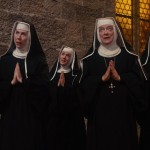
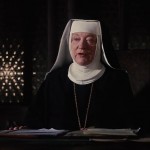
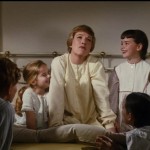
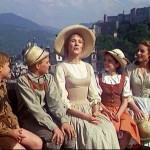
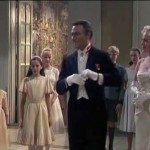
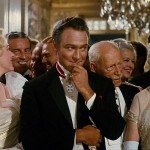
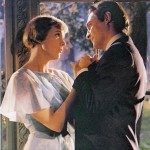

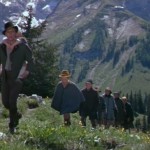
The star of the film was the previous year’s Best Actress Academy Award winner, a fresh-faced Julie Andrews in a similar role as her governess performance in Mary Poppins